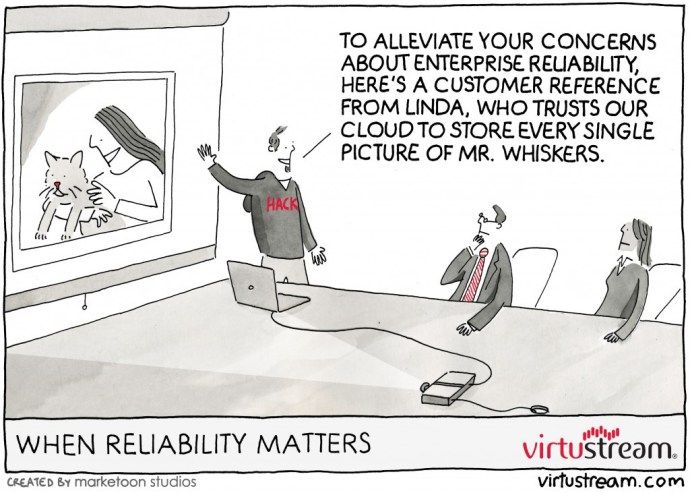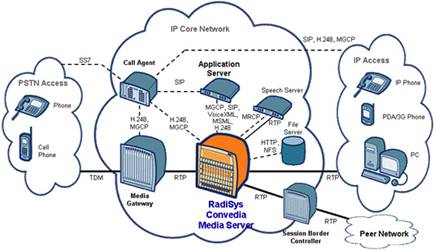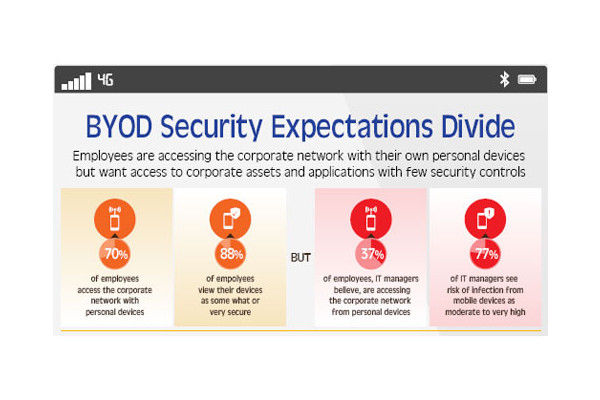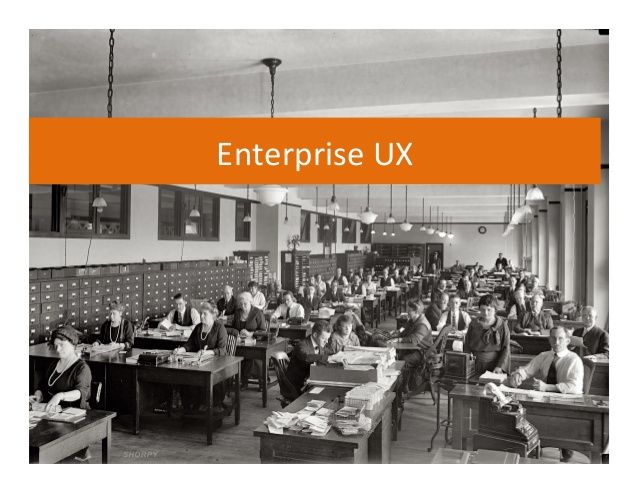In the consumer space, IT and UX seem to go hand in hand. Adoption is driven by user experience and so is retention. Products like Apple’s iPhone are borne from the understanding that ease-of-use and enjoyment of use are vitally important. Over in the Enterprise world, this seems to have passed many people by.
The user experience in enterprises appears to be about the last priority in IT development. The CEOs personal whims (even if the CEO will never touch the application in question) are a massive priority. The people who use the application are rarely, if ever, considered in many environments. There is an assumption that if you have to use something for work – you will use it properly even if the experience is akin to being forced to run the 100 meters on your hands against people who are allowed to use their feet.
This has to change. The world around the enterprise has already shifted. The lines between the home, social life and work life are becoming increasingly blurred. Millennials and Gen Y in particular are going to expect a consistent experience in their IT environments and they’re going to vote with their labour if it’s not provided. Enterprises that want to stay competitive need to focus on user experience. We’ve identified 5 ways that the user experience in Enterprise IT environments needs to improve:
Purpose Above Platform
Enterprise systems need to be chosen for their experience and purpose rather than for which platform the IT team prefers to operate on. This is the age of cloud computing there’s no business justification for legacy platforms any more. The infrastructure used to deploy systems can be adapted to any technical requirement at a reasonably low cost.
These platforms need to provide a similar range of experience to the platforms people use in the rest of their lives. There’s no excuse for awkward deployment environments and archaic platform dependent processes any more. The trend of BYOD (Bring Your Own Device) will continue to accelerate and the transition between environments must be seamless.
Reliable Experiences
Years ago, I started work for a software company. My job was to manage a team harvesting data with their application. The job didn’t start well. On the first day of work, the company’s server infrastructure collapsed and with it our ability to access the application and to harvest the data the project needed. Those servers were restored on a late Friday afternoon at the end of my first week. There’s no unhappier moment than trying to explain to your new boss that you’ve done no work because the company’s IT infrastructure sucks.
Down time should be a thing of the past. Again, cloud computing enables consistent and reliable experiences. People want to be productive at work and the user experience should always enable productivity.

Author/Copyright holder: Virtustream.com. Copyright terms and licence: All rights reserved Img source
New Network Approaches
Enterprise networks are going to need to enable the user experience from network to personal device and back again. The change from technology centred development to user centred development is a pre-requisite for this.
That means constructing networks to deliver this experience. Next generation networks will also need to continue to provide the levels of server-server communication currently required in the enterprise environment.

Author/Copyright holder: Radisys. Copyright terms and licence: All rights reserved Img source
Security Approaches Will Have to Change
This may be the biggest challenge to the enterprise user experience; how do you deliver an environment where a device can go literally anywhere and the experience does not change and deliver that in a secure manner?
Devices need to be locked down enough so that data cannot easily be retrieved from a lost or stolen device. At the same time they need to be open enough so that accessing data by the actual user is not a painful or time consuming process.
Some services, for example DropBox, will exist completely outside the company’s own infrastructure. Thought needs to be given as to how to balance the need for such services whilst protecting corporate data.
Cyber-crime is on the rise too. In a global enterprise environments businesses are becoming their data sets. Protecting that data is critical to business longevity and the ability to compete. With even national governments, such as China, involved in corporate espionage – this is going to be a major challenge to UX professionals.

Author/Copyright holder: Unknown. Copyright terms and licence: Unknown Img source
Aligning People, Processes and The Enterprise Itself
The overall user experience requires a level of management within the enterprise itself. There needs to be a common vision of what the overall enterprise user experience should be like. People and processes will need to align the way they work, to some extent, to this vision.
In turn this should make it easier for the enterprise’s UX team to define personas and deliver a UX strategy which is in keeping with the vision. Of course, there will always be some unhappy customers with any development – ask any major consumer software provider Facebook, Google, Apple, Microsoft, etc. have all taken wrong turns on their development roadmaps at times.
There will also need to be a feedback mechanism for users within the enterprise to express their concerns when the user experience doesn’t meet their expectations. That means enabling processes to allow people to raise concerns without fear of sanction or isolation at work. Users are only going to contribute to the development of the enterprise user experience if it’s done in an environment of safety rather than one of shame and blame.
Summary
It is time that the enterprise IT environment caught up with the consumer IT environment. Younger generations are more and more familiar with hardware and software before they enter the employment market. Their expectations of systems are much better developed than those in previous generations where IT was slightly scary, expensive and something they had to put up with.
Enterprises that want to attract the best talent will need to enable that talent to perform and that means addressing the weaknesses of the user experience inherent in so many of today’s systems.
Header Image: Author/Copyright holder: Unknown. Copyright terms and licence: Unknown. Img











